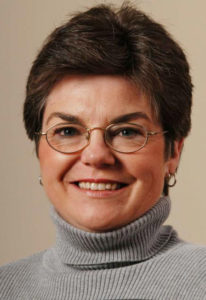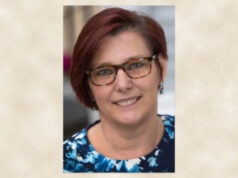
When my old grandmother visited Virginia in the late 1960s, it was her first trip back since her family had migrated to the Midwest when she was a child near the turn of the 20th century.
Nevertheless, there were memories she held close, including the family legend that after the Civil War ended, and her grandfather had been compelled to release his enslaved persons, they hadn’t wanted to leave.
“They said to my grandfather,” she told my cousins who traveled with her, “we want to stay with you, massa.”

She held, until her death in the 1980s, the conflicting views that those long-ago African American people had been both close to and loyal to the family, and yet now, their descendants were inferior, not to be trusted and decidedly second class.
Grandma’s firmly held prejudices remind me that even though the slave trade, the Civil War and Jim Crow seem like ancient history to some, they live. History lives, translated into a litany of sins of endemic racism today. They live on in our implicit biases.
Grandma, who bequeathed to me her tiny stature and that Southern name “Effie,” reminds me of William Faulkner’s famous quote: “The past is never dead. It’s not even past.”
There’s another aphorism, that as we look at our history we stand on the shoulders of giants. True, but we also stand on the shoulders of flawed, sinful people, and many times those two are one and the same.
Thomas Jefferson? How do we reconcile his powerful, foundational words on freedom and equality with his commitment to the institution of slavery? His political eloquence was rivaled only by Lincoln’s. Yet he kept an enslaved Black concubine.
I am not just the descendant of my grandma; I am the inheritor of this whole tradition. So are all Americans, the heirs of goodness and grace, evil and sin.
Currently, some are attacking the past by attacking statues. Many statues in public places clearly need to be removed, including those of Confederate generals erected specifically to proclaim the suppression of Blacks.
In San Francisco recently, St. Junipero Serra‘s representation was knocked off its pedestal. St. Serra lived in the 18th century, a founder of the California missions during the time of colonization. He was canonized in 2015.
We had time to examine his worthiness, but his canonization was controversial, because the early missionaries were often culturally insensitive and had little regard for the way of life or faith of the Native Americans they encountered. The goal was “conversion” at all costs.
Maybe we should reexamine this canonizing business, in our secular world and the church. Someone said once that a saint is simply someone you don’t yet know very well. At the root of each of us is a complex soul struggling toward God within the cultural context of our own time.
So, examine our statues and our saints. But let’s spend more time examining our hearts, for the bias we haven’t noticed, the unrealized prejudice, our acquiescence with institutional sin.
What will our grandchildren look back on some day and ask, “How could they have done that? Thought that? Missed that?”
Did I protest children in cages? Do I proclaim that life in the womb is sacred, yet fail to demand health care and a safety net for mothers in desperate poverty? Do I become angry in the face of injustice, but quietly move on?
We decry those who justified the institution of slavery, and well we should. But now is the time to look at our own institutions and most especially at our own hearts.






